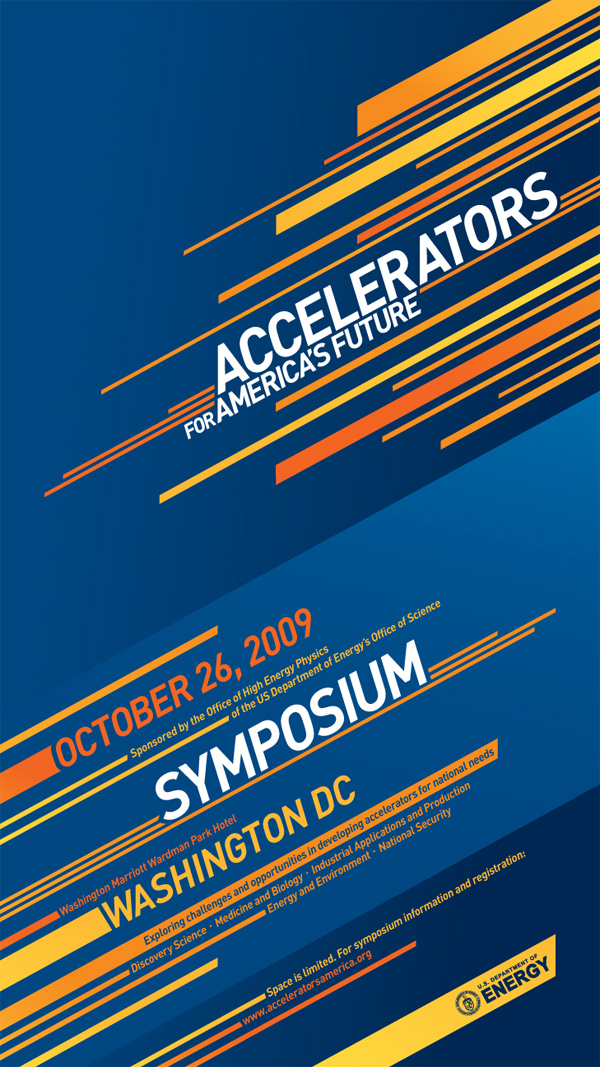Accelerators for America's Future----Fermilab Director: Pier Oddone
Last week some 400 attendees participated in the Symposium on Accelerators for America's Future in Washington, D.C. They represented  scientists, engineers and policy makers involved in the development and uses of accelerators: scientific research, medicine, new concepts for energy and the environment, industrial processes, security applications and education. The one-day symposium was followed by a two-day workshop to explore in detail the challenges posed by the needs of future accelerators. The meeting was remarkable for covering the wide scope of accelerator applications.
scientists, engineers and policy makers involved in the development and uses of accelerators: scientific research, medicine, new concepts for energy and the environment, industrial processes, security applications and education. The one-day symposium was followed by a two-day workshop to explore in detail the challenges posed by the needs of future accelerators. The meeting was remarkable for covering the wide scope of accelerator applications.
The Office of High Energy Physics within the DOE Office of Science, the predominant supporter of accelerator science and development, sponsored the meeting. The purpose of the symposium was to identify the next steps necessary to improve accelerators for each of their applications, the major cost reductions that may be possible, the areas of cross-cutting technology R&D that hold the most promise and to understand how to bridge the "valley of death" between basic research and the deployment of accelerator applications with broad impact on society.
Historically, OHEP has played a predominant role in the development of accelerators. As particle physics tackled ever more challenging and difficult questions it pushed the technological frontiers in accelerator science and design. The drive to higher energies, higher intensities and more compact beams of electrons, protons and nuclei has been at the root of most developments. More than 10,000 medical accelerators and 18,000 industrial accelerators were built over the last few decades. Light sources and neutron sources, now broadly used in scientific research in biology, material science and chemistry; find their origin in accelerators used for particle physics.
The role of OHEP in support of accelerator science in the past was generally motivated by potential applications to particle physics. The results of Accelerators for America's Future may well lead to the extension of that role: to cover explicitly areas beyond those motivated just by particle physics. This extension of advanced accelerator R&D into a broader domain would connect particle physics more broadly to societal impacts. Fermilab could make important contributions to such a program. In the meantime, we have brought to Fermilab the dozens of posters displayed at the symposium and will place them in the Wilson Hall atrium for the next couple of weeks, beginning Monday. I encourage you to explore the amazing results and ideas that they represent.
Source: Fermilab Website